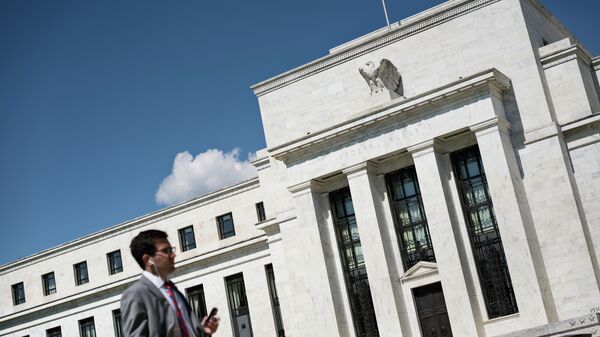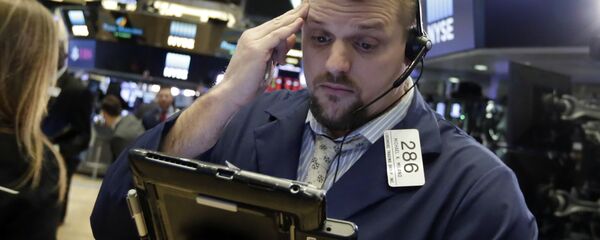Kristian Rouz — Federal Reserve Chairman Jerome Powell says the US central bank could retire some of its key policy-setting tools and key macro indicators. The move is aimed at improving the precision of the Fed's assessments of economic health, enhancing policy transmission to the non-financial sector, and reducing the chances of policy mistakes.
Powell said that he doesn't completely trust concepts such as the "neutral rate" and hypothetical estimates of "full employment" when making his policy decisions. The chief of the US central bank said that the Fed should avoid excessive reliance on its theoretical tools and variables, but should take into account a broader set of market and non-financial sector data instead.
The latter combines the benchmark 10-year Treasury yield and average interest on long-term commercial credit products — such as a 30-year fixed mortgage. The "neutral rate" is also known as "r-star" and it's been used as a proxy for market-determined central bank interest rates — at which the broader economy would keep its growth momentum.
READ MORE: Turkish Finance Minister Downplays Economic Risks Amid Ongoing US Spat
The concept of "neutral rate" has drawn some criticism recently for being inaccurate and subject to constant revision. But some Fed policymakers are cautious in their approach to change the methodology.
"If you know that the neutral rate is subject to revision and is a theoretical concept, you want to move gradually," Dallas Fed President Robert Kaplan said.
But a new study from a team of international central bankers suggests the "neutral rate" doesn't help efficient policy-setting and by using this measure as a proxy for their rate-setting, central banks could actually hurt longer-term economic growth.
"In some sense lower rates beget lower rates," Piti Disyatat of the Bank of Thailand said. Central bank policy decisions could impact the neutral rate, meaning "its ability to act as a benchmark is undermined," the researcher added.
The "neutral rate" inevitably goes up as well, becoming an elusive policy target, which the central bank is never able to achieve without hiking its rates too aggressively. However, a quicker pace of rate hikes could hamper lending and business activity, hurt GDP growth and even bring on a recession.
READ MORE: Federal Reserve Officials Heatedly Debate Policy Course After Trump's Criticism
Some US policymakers agree with such a view, saying that adherence to the "neutral rate" enables elevated central bank interest rates in a longer-run. However, others said that the Fed could hit the "r-star" — currently estimated at 2.5-3 percent — by the yearend, if the central bank keeps the pace of its interest rate hikes.
Fed officials say next year might see a big reshuffle in the Fed's methodology. Policymakers argue that since the US economy has maintained its growth momentum this late into its 10-year business cycle, the central bank should fine-tune its tool to be prepared for unconventional challenges up ahead.
However, officials say there is little clarity as to what happens after the Fed hits the "r-star" later this year or next.
"That's a judgment that I'm not prepared to make yet… it won't be until middle spring to middle of next year before we are approaching a level that I think is in the range of neutral," Robert Kaplan, president of the Federal Reserve Bank of Dallas, said. "And I will all along the way be revising my views for what is the outlook for the economy".
His fellow board member, Chicago Fed President Charles Evans, has previously suggested Fed interest rates should and must go above and beyond the 2.5-2.75-percent "neutral" level — once that is achieved by mid-2019.
READ MORE: US Federal Reserve Expects Further Interest Rate Increases — Powell
But investors are skeptical either way. There is little enthusiasm over the "neutral rate" amongst market participants — however, some don't believe the Fed could efficiently replace it.
"The risk is if the Fed inadvertently anchors the market on a particular number… That is when you get surprised," Roger W. Ferguson Jr., president of financial giant TIAA and former Fed vice chairman, said.
All this suggests that the Fed is in for an intensified policy debate in the first half of 2019 — which might hinder its decision-making for at least several months.







